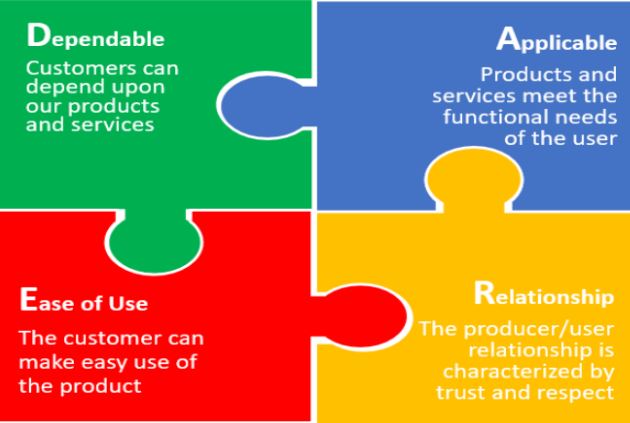How to Position the Value of KPIs and Performance Measures
by Stacey Barr |To engage leaders, managers and teams in better performance measurement, we must position the value of KPIs from their perspectives rather than our own. Here’s how…

If you’re reading this, you’re probably a lot like me, and believe that KPIs and performance measures are a power tool in strategy execution and organisational performance improvement. And, that every leader and manager and team should value them as an essential part of their toolkit.
But they continue to resist. Why?
We might get a clue from the work of the United Nations Economic Commission for Europe (UNECE), to find meaningful ways to measure the value of official statistics. With the help of PuMP’s Results Map, the UNECE team arrived at the conclusion that value should be defined as the results that the customers of those statistics experience. Not the results the statisticians care about.
“The report argues that it can be unhelpful and even detrimental to simply assume that what makes official statistics valuable are the things official statisticians themselves think are important—accuracy, reliability, consistent use of clearly-defined concepts and internationally-agreed methods. What if the people who actually use the statistics, or those who benefit indirectly from them, in fact value something different?” – UNECE
This gives us an insight into a potentially weighty reason why leaders, managers and teams are not sold on our insistence that performance measurement really matters.
The quality of KPIs is not the same as their value.
How a performance measurement professional might define the value of KPIs is different to how the users of those same KPIs would define value. We might think of defining KPI value using attributes like these:
- the quantitative clarity of each KPI
- the accuracy of data on which KPIs are based
- the relevance of each KPI to its goal
- the linking and alignment of KPIs throughout the organisation
- the ease or speed of developing the KPIs
- the level of ownership of each KPI
These things are certainly important to develop high-quality KPIs. But that’s not the way that users of KPIs think about them.
“Like the foreign tourist who speaks louder and louder in their own language in the hope of being understood, we risk alienating our users by simply stating our values and hoping that people will ‘get it’. More helpful would be communicating how we fulfil their criteria of value.” – UNECE’s Conference of European Statisticians Task Force
We can’t keep selling KPIs and performance measurement with arguments that resonate with us. We need a model to find the arguments that resonate with them.
Users of KPIs don’t necessarily know how to define their value.
Many of our leaders and managers and teams don’t have a concept yet of the value of KPIs and performance measures. So asking them how they’d measure value is pointless, just as the UNECE team concluded:
“In fact it is not so simple, since we cannot expect all customers to be conscious of or able to put into words what it is that makes official statistics valuable (or not) to them…” – UNECE’s Conference of European Statisticians Task Force
But we don’t have to start with nothing.
The DARE model is a starting point for defining KPI value.
The UNECE team found that the DARE model was a great starting point for getting the user – or rather, customer – side of value more easily defined. DARE was developed by Stats NZ, with four dimensions that collectively help define value from the customer perspective.
It’s easier now to imagine the types of results that would define value for the users or customers of quantitative information, when we think from the four perspectives of ‘Dependable’, ‘Applicable’, ‘Ease of Use’ and ‘Relationship’:

The DARE model is not a measurement framework. DARE is a results framework, and it can point us in the right direction to find the specific attributes of KPI value that are most meaningful to our leaders, managers and teams. Just like in PuMP, we start by defining the results that matter before we think about the measures we need. When results are chosen and articulated clearly, the measures are a natural flow on.
How to use DARE to talk about the value of KPIs…
Even if we don’t go the extra step of measuring the value of KPIs (even though I’ve thought about it a little, here, and here) it’s still useful to articulate that value in clear results language. It’s useful, because those results help us show our leaders, managers and teams how measurement is valuable to them.
But, those results need to be from the perspectives of those leaders, managers and teams (and not from our own). Using the DARE model, the kinds of results that I think could be a good starting point for testing value with our KPI customers are these:
For the DARE dimension of ‘Dependable’, we might test if results like these resonate with our leaders, managers and teams:
- KPIs reveal more of the truth about performance
- Performance improves faster with KPIs guiding decisions and actions
- Strategic initiatives have a higher return on investment with KPIs
For the DARE dimension of ‘Applicable’, we might test if results like these resonate with our leaders, managers and teams:
- For every performance improvement or strategy execution decision, there are always relevant KPIs
- Every KPI is used by the team that should act on it
- KPI reports quickly lead to shared understanding and confident decisions
For the DARE dimension of ‘Ease of Use’, we might test if results like these resonate with our leaders, managers and teams:
- Consensus on KPI interpretation is quick and easy to reach
- KPI reports are easy to navigate and focus us on priorities
- It’s easy to develop a new meaningful KPI whenever one is needed
For the DARE dimension of ‘Relationship’, we might test if results like these resonate with our leaders, managers and teams:
- Insight about performance comes from dialogue using the KPIs
- People willingly exercise accountability for their KPIs
- Learning from KPIs is shared widely throughout the organisation
A great exercise would be to put yourself into the shoes of – or conversations with – a leader, manager or team that you want to encourage to make better use of KPIs. In those shoes or conversations, test results like those listed above. Let that lead you to create your own list, to shift the way you position the value of KPIs and performance measurement in your organisation.
Connect with Stacey
Haven’t found what you’re looking for? Want more information? Fill out the form below and I’ll get in touch with you as soon as possible.
167 Eagle Street,
Brisbane Qld 4000,
Australia
ACN: 129953635
Director: Stacey Barr




